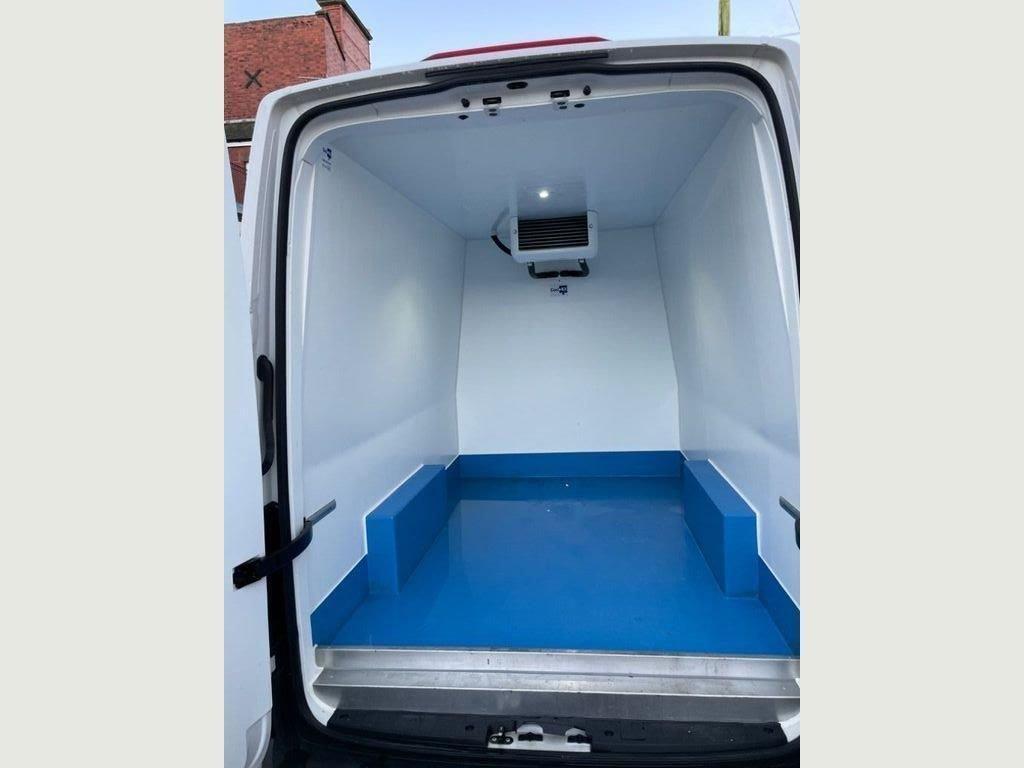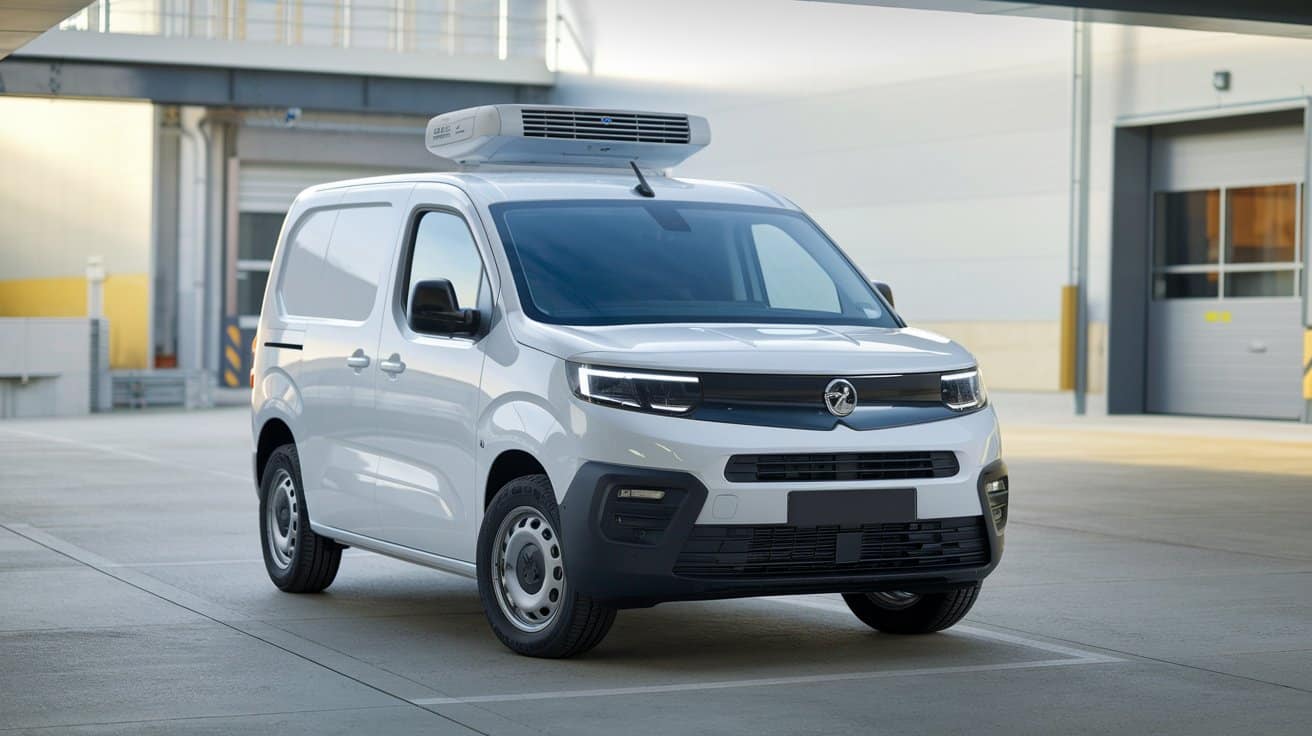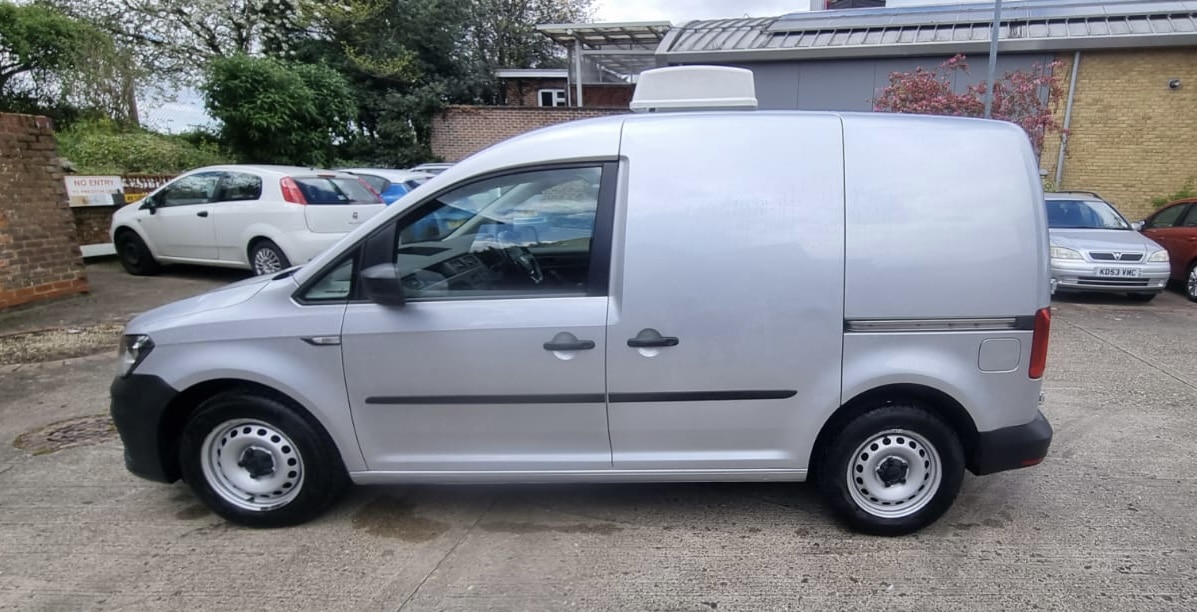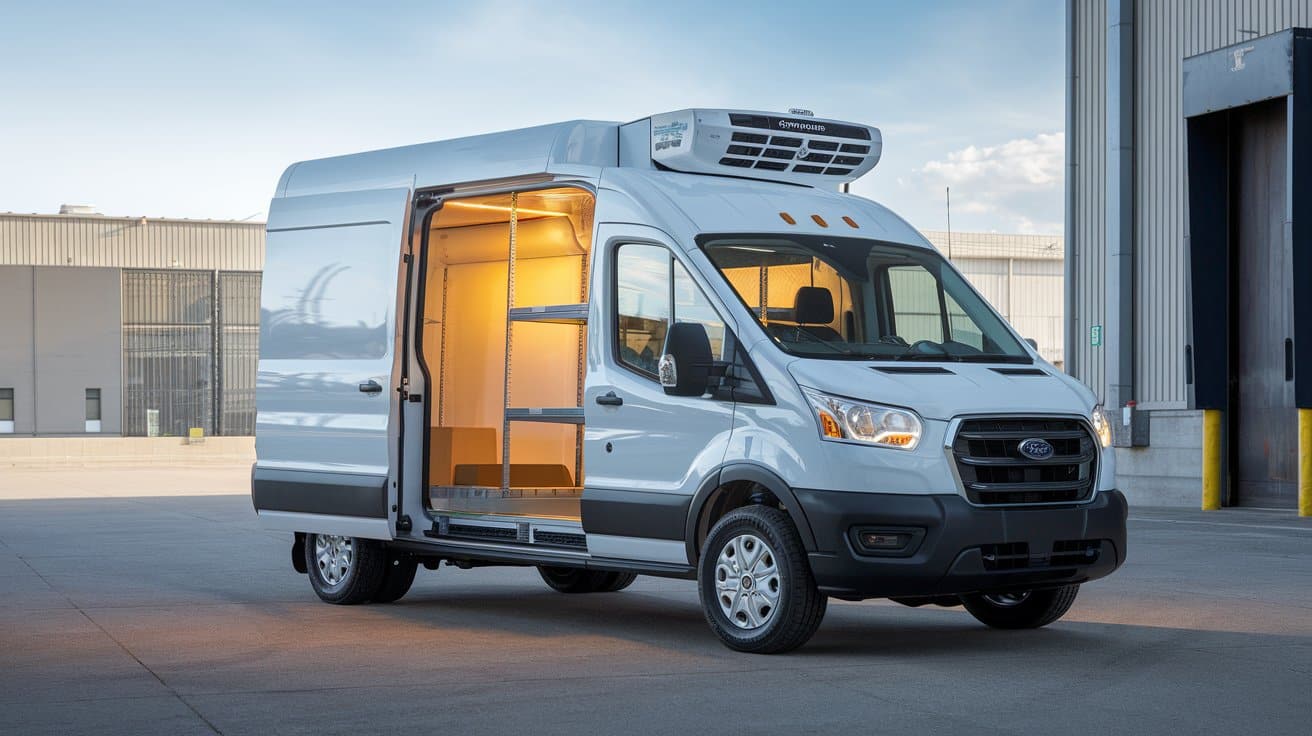
Elevate Fleet Consistency—Standardise Your Refrigerated Vehicles for Peak Performance
Refrigerated van operations depend on reliability and efficiency. Yet, too many food, pharma, and logistics fleets settle for legacy custom builds and spec drift, introducing complexity where they need precision. The cost? Increased downtime, compliance risk, unpredictable maintenance, and escalating overhead. Leaders in the cold chain now recognise the operational advantage of total fleet standardisation.
When your entire fleet is designed around a core Glacier Vehicles specification—optimised for GDP, ATP, DEFRA, and ISO9001 compliance—your delivery, service, and audit performance accelerate. Training becomes uniform. Documentation and audit-readiness are always up to date. Every asset speaks the same language, and every stakeholder—from finance and procurement to compliance and field ops—gains daily confidence in uptime and cost control.
“Authority isn’t a slogan or a badge—it’s the traceable performance your partners and clients can verify every quarter.”
Standardisation unlocks procurement power: your team buys parts in bulk, aligns all aftercare protocols, and leverages a single digital dashboard to monitor performance, temperature stability, and compliance status for every vehicle. Instead of reacting to the next surprise, you can shape future contracts and set new standards for on-time delivery, audit pass rates, and commercial wins.
What Technical & Regulatory Elements Define Fleet Standardisation?
Delivering cold chain compliance requires more than badge engineering or matching van colours. It’s a question of harmonised conversions, identical refrigeration technology, documentation, digital reporting, and process integration—calibrated for both today’s and tomorrow’s industry standards.
Building Blocks for a Standardised Fleet
Every Glacier Vehicles build or retrofit features:
- Spec-matched Styrofoam insulation (50mm or 75mm as per temp range)
- GAH refrigeration for dual-temperature, direct drive, and electric standby needs
- GRP hygienic interiors meeting HACCP and DEFRA requirements
- Digital telematics and IoT sensors for real-time temperature, route, and compliance oversight
- Documented calibration, warranty, and service log aggregation centralised for audit-readiness
| Element | Standardised | Non-standardised |
|---|---|---|
| Refrigeration | GAH system | Mixed brands/parts |
| Insulation | Uniform spec | Variable, legacy builds |
| Data logging | Fleet-wide | Patchy, paper records |
| Audit reporting | Digital, live | Manual, slow, error-prone |
Standardisation isn’t static. As DEFRA, GDP, HACCP, and ATP guidelines evolve, future upgrades can be performed modularly. This keeps your entire asset pool resilient to both regulation and market shifts—whether you’re delivering ice cream, pharma, or artisan baked goods.
Why Do Standardised Fleets Dramatically Improve Compliance, Uptime, and Brand Trust?
Uniformity is the backbone of compliance. With standardised refrigerated vans, audits become repeatable drills, not fire-fighting events. Pass rates for MHRA, ATP, and DEFRA certifications climb, and your business gains a commercial asset: documented, proof-ready reliability.
- Every vehicle is always calibrated, logged, and maintained for instant compliance checks.
- Repair and service become predictable. There’s no more ‘wait for a specialist’—teams are trained on one standard, reducing mistakes and maximising uptime.
- Partners and clients see your capability in practice: “These documents, these standards—no explanation required.”
“Brand trust isn’t talk. It’s a digital paper trail that stands up to every audit and client review.”
Audit stress disappears, QA teams surface and solve issues early, and commercial clients know they’re dealing with a logistics operation that’s contract-ready and dependable in any regulatory climate.
How Does Fleet Standardisation Slash Maintenance Costs and Streamline Servicing?
Every unique spec means additional parts, unpredictable inventory, incompatible maintenance protocols, and downtime as assets queue for attention. A standardised fleet flips the script:
- Bulk purchasing reduces per-unit cost and ensures spare parts availability
- Technicians and aftercare teams work with one system, cutting repair lead time and error
- Maintenance cycle tracking is digital and uniform, leading to consistent repair intervals and even load balancing across the vehicles
| Maintenance Metric | Unified Fleet | Mixed Specs |
|---|---|---|
| Parts inventory | Central, minimal | Distributed, often overstock |
| Uptime and service | Predictable | Lag, surprised by gaps |
| Budgeting accuracy | Robust, spreadsheet | Variable, hard to forecast |
| Aftercare leverage | Favourable contracts | Each asset a negotiation |
Predictability in fleet maintenance becomes a business asset. Budget-holders gain reliable forecasting, and leadership can defend their numbers to the board with credible, operation-wide evidence.
Where Can Sector-Specific Needs and Customisation Be Built Into Standardisation?
Custom overlays across a single foundation unlock the best of all worlds—sector agility atop operational reliability. Glacier Vehicles crafts modular specifications that keep the compliance DNA intact, while enabling industry-specific features.
- Pharma logistics: GDP/MHRA datalogging, dual-zone temperature monitoring, and secure lockouts are provided as bolt-on modules
- Food/produce: ATP plates, high-hygiene wall linings, and snap-fit shelving maintain washdown and traceability standards
- Florists/events: humidity balance, shock-absorption, and branding modules
- D2C retailers/artisans: branded interiors and shelving without deviating from core serviceability
Every adaptation is digital, catalogued, and included in the compliance and maintenance plan, ensuring the fleet remains both agile and standards-proof.
When Is the Right Time to Launch or Upgrade to a Standardised Fleet?
Success in cold chain logistics isn’t about avoiding problems at the last minute—it’s about preempting them through asset, compliance, and audit readiness.
Early signals that it’s time to standardise:
- Multiple suppliers for spares and support are causing confusion or budget creep
- Maintenance teams are logging extra training hours on each van
- Recurring audit delays, with documentation scattered or slow
- Contract bids requiring higher compliance guarantees or digital logs become difficult to pursue
Glacier Vehicles supports your decision with phased rollouts—start with worst-performing asset groups, pilot a retrofitted standard, and roll forward as results and savings are proven. This futureproofs procurement, compliance, and operational leadership.
“In logistics, it’s the proactive, not the reactive, who win contracts and retention.”
How Can Results and Return on Investment Be Measured Across Standardised Fleets?
Glacier Vehicles standardised systems make ROI reporting an operational fact, not a retroactive guess.
- Audit pass rate upgrades: trackable month to month, per fleet and per regulation
- Downtime reduction: logged per vehicle, aggregating to total contract reliability
- Maintenance cost savings: itemised, compared to legacy spend
- Onboarding and ramp time savings: measured in training logs and operator feedback
- Budgetary resilience: deviation rates drop, as unplanned expenses virtually disappear
| KPI | Legacy Fleet | Standardised Fleet |
|---|---|---|
| Audit pass rates (%) | 82 | 98–100 |
| Extra downtime (%) | 19 | 4 |
| Onboarding (hrs) | 9 | 2 |
| Budget deviation (%) | 24 | 7 |
Every department involved in the fleet’s operation—from compliance to finance—gains defensible, real-time proof of improvement.
Book Your Free Consultation With Glacier Vehicles Today
Real leadership isn’t a target; it’s the operational discipline that earns the trust of auditors, clients, and contract partners all year. The companies dominating the next decade of cold chain are the ones that engineer their outcomes—standardise their fleets, automate compliance, and treat audit readiness as a competitive weapon.
Let Glacier Vehicles dial-in operational consistency, cost predictability, and sector credibility for your fleet. Let your vehicles’ performance broadcast your commercial ambition. Discovery here is decisive: book your call and make reliability the storey your customers tell for you.
Frequently Asked Questions
How Does Fleet Standardisation Deliver Reliable Compliance—Every Time?
True regulatory compliance is achieved by engineering it into your fleet—not by hoping your paperwork holds up under scrutiny. When every refrigerated van shares the same conversion process, refrigeration components, data-logging infrastructure, and maintenance regime, compliance stops being a last-minute panic and becomes a measurable business asset. Auditors and clients don’t want promises—they want pristine calibration logs, up-to-date certificates, and maintenance records mapped to each asset ID.
Switching to a standardised fleet means every asset is always traceable to GDP, HACCP, DEFRA, and ATP standards. Service teams and compliance officers gain real-time visibility: documentation is surfaced in one dashboard, not extracted from orphaned paper files or panicked phone calls. This reliability wins regulatory approval swiftly, unlocks new contract opportunities, and signals to the marketplace that your operation is one competitors are forced to respect. You hold a new kind of power: proof, not hope.
What Operational and Financial Changes Will You See With a Standardised Fleet?
Standardisation isn’t about ticking boxes—it’s a force multiplier that transforms cost, reliability, and competitive agility. Unifying your fleet brings all maintenance and procurement into a predictable cycle: parts are stocked in volume, repairs are completed the first time, and OPEX swings turn into a stable, forecastable line-item. By ending the chaos of incompatible van models, you reduce time lost to cross-training, rush sourcing, and the avoidable downtime that quietly depletes revenue.
Procurement influences negotiations for better insurance rates, suppliers respond with priority contracts, and your audit scores stop wavering seasonally. Regular maintenance is scheduled for the entire fleet, avoiding asset-specific breakdowns. The result? More deliveries completed, fewer service disruptions, lower total cost per route, and a leadership reputation that moves you to the front of high-value tenders.
Can You Still Customise Your Vans for Different Sectors While Keeping a Standardised Fleet?
With a robust standard as your foundation, true modularity is built in—not compromised. Glacier Vehicles’ approach enables sector overlays: dual-zone temperature controls for meat and frozen food, GDP-certified audit logs for pharma, humidity and branding packages for florists, event shelving or bakery-specific racking—all atop a core that never strays from compliance, durability, or traceability.
Every adaptation is rapid, repeatable, and audit-proof—delivered without sending the whole fleet back through engineering hell. That’s how blue-chip brands, national caterers, and specialist D2C operators stay lean and quick, deploying niche adaptations without sacrificing their fleet’s readiness for the next contract—or the next regulation. Your flexibility is no longer the enemy of your reliability; it becomes your competitive edge.
How Do You Know When to Act—What Signals Demand Fleet Standardisation?
It often starts quietly: staff reports of repeated breakdowns, audit delays, parts shortages, or driver confusion. When asset downtime spikes mysteriously, or complaints about paperwork or late runs begin to stack up, you’re already past the first inflexion point. Organisational leaders who analyse their largest cost overruns—unplanned maintenance, emergency repairs, compliance fines—find recurring themes all leading back to inconsistent asset management.
Major business shifts—like new contract requirements, regulatory rule-changes (ULEZ, DEFRA, ATP), or mass asset retirements—spotlight the urgency. Leading operators don’t wait for a full-blown crisis. They initiate phased pilots in problem regions or asset classes, validate ROI internally, and expand seamlessly. Fleets that move early demonstrate futureproof resilience, earning trust and preferential treatment from suppliers, regulators, and clients alike.
How Do You Prove (and Leverage) the ROI of Fleet Standardisation?
Proof is the new pitch. Standardised asset management delivers transparent, defensible numbers: higher audit pass rates, drastically reduced downtime, sharply lower maintenance variance, and rapid onboarding. Advanced analytics mean you always know the cost per mile, downtime per route, service cycle adherence, and compliance posture across every depot.
Regular board updates or client RFPs are no longer a patchwork of estimates or excuses—instead, you offer live dashboards and decisive tables that show:
| Key Metric | Mixed Fleet | Standardised | Change |
|---|---|---|---|
| Pass Rate | 89% | 99% | +10% |
| Asset Downtime | 14 days | 4 days | -71% |
| Repair Variation | £900 | £340 | -62% |
| Onboard Hours | 7 | 2 | -71% |
This quantitative certainty empowers procurement leads, compliance officers, and operations managers to win negotiations, increase contract value, and command higher market confidence. Data-driven leadership is no longer aspirational—it’s table stakes.
Why Are Glacier Vehicles the Partner of Choice for High-Performance Fleet Standardisation?
Glacier Vehicles combines deep expertise in conversion, modular overlay engineering, and compliance-first construction. Every build is designed to give your team the edge: instant audit readiness, real-time maintenance intelligence, and scalable sector adaptation. Regulatory codes shift, client expectations rise, and asset lifecycles demand precision deployment—so Glacier Vehicles’ support, digital service infrastructure, and industry fluency make your upgrades resilient, intentional, and future-ready.
Your business doesn’t just stay compliant; it sets benchmarks that raise expectations across your industry. Longevity and profitability rise in lockstep—every new contract, region, or regulation met with confidence. A fleet anchored by Glacier Vehicles is one that the competition must chase—and regulators respect.



